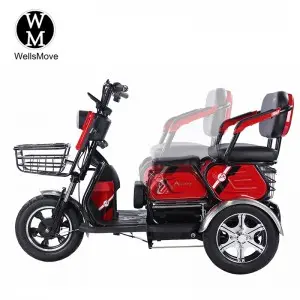Boston, Massachusetts is a historic city with cobblestone streets, historic buildings, and important landmarks. For many people, exploring the city on foot can be a challenge, especially those with limited mobility. However, with the help of electric scooters, visiting historic Boston is not only possible, but an enjoyable experience.
For people with limited mobility, mobility scooters are a great way to get around the city and explore its rich history. These electric vehicles provide a convenient and comfortable mode of transportation, allowing people to visit historical monuments, museums and other attractions without the physical exertion of walking long distances.
When exploring historic Boston using a mobility scooter, there are several important factors to consider. From accessibility to specific attractions to the overall experience of visiting the city, here’s everything you need to know about exploring historic Boston on an electric scooter.
Accessibility of historical monuments
One of the main concerns for individuals using a mobility scooter to get around historic Boston is the accessibility of the city’s historic sites. Luckily, many of Boston’s most famous landmarks and attractions are wheelchair and scooter accessible. The Freedom Trail takes visitors through the city’s revolutionary past, and places like the Boston Tea Party Ships & Museum are accessible for people with mobile devices.
Additionally, many of the city’s museums, such as the Museum of Fine Arts and the USS Constitution Museum, are equipped with ramps, elevators, and accessible restrooms to ensure visitors using mobility scooters can fully enjoy the experience.
Tour the city streets
Boston’s historic charm is evident in its narrow, winding streets and historic buildings. While this adds to the character of the city, it also creates challenges for individuals using mobility scooters. However, the city has made significant efforts to improve accessibility, installing curbs, ramps, and designated accessible pathways throughout the downtown area.
When exploring historic Boston using a mobility scooter, it’s important to plan your route ahead of time, taking into account street and sidewalk accessibility. Individuals with mobile devices can also use the city’s public transportation system, including buses and subways, providing an alternative way to get around.
Guides and assistance
For those who may be concerned about getting around the city on their own, there are guided tours designed specifically for individuals with mobility scooters. These tours often offer easy transportation and knowledgeable guides who can provide insight into the city’s history and culture.
In addition, many Boston attractions and tour operators offer assistance and support for individuals with mobile devices to ensure a seamless and enjoyable experience. Whether taking a guided tour of the historic North End or visiting the iconic Fenway Park, individuals using e-scooters have the option to fully participate in the city’s activities.
Plan your visit
Before embarking on a tour of historic Boston using a mobility scooter, it’s necessary to do some research and planning to ensure a smooth and enjoyable experience. Start by identifying the specific attractions and places you want to visit and check their accessibility information. Many attractions have detailed accessibility guidelines on their websites, providing valuable information for visitors using mobile devices.
It’s also a good idea to contact the attraction or tour operator ahead of time to ask about any specific accommodations or assistance they can provide. This proactive approach can help ensure that your visit is suitable for your needs and that you can make the most of the experience without running into any unexpected challenges.
In addition to researching specific attractions, consider the logistics of using a mobility scooter to get around the city. Boston’s public transportation system and accessible taxi and ride-sharing services provide convenient options for getting from one place to another.
Finally, be aware of the weather and time of year when planning your visit. Boston experiences four seasons, and weather conditions may affect accessibility in certain areas. For example, winter ice and snow can create additional challenges for individuals using mobility scooters, so it’s important to take this into consideration when planning your visit.
Overall, getting around historic Boston using a mobility scooter is not only possible, but also a rewarding experience. The city’s rich history and vibrant culture are open to all, and with careful planning and consideration, individuals with mobile devices can fully immerse themselves in all that Boston has to offer.
In summary, exploring historic Boston using a mobility scooter opens up a world of possibilities for individuals with limited mobility. From the iconic landmarks along the Freedom Trail to the bustling streets of downtown Boston, the city’s rich history and vibrant atmosphere are at your fingertips. With accessibility in mind and proper planning, exploring historic Boston using a mobility scooter can be an enriching and memorable experience for visitors of all abilities.
Post time: Jun-21-2024



